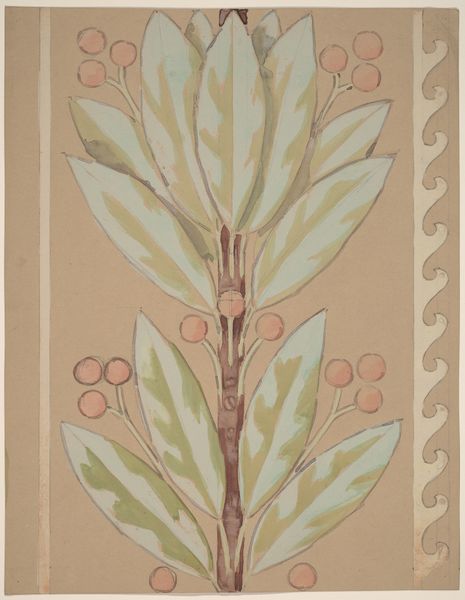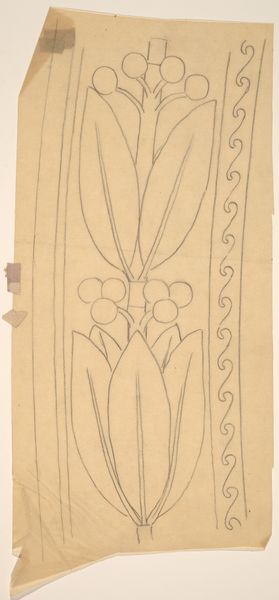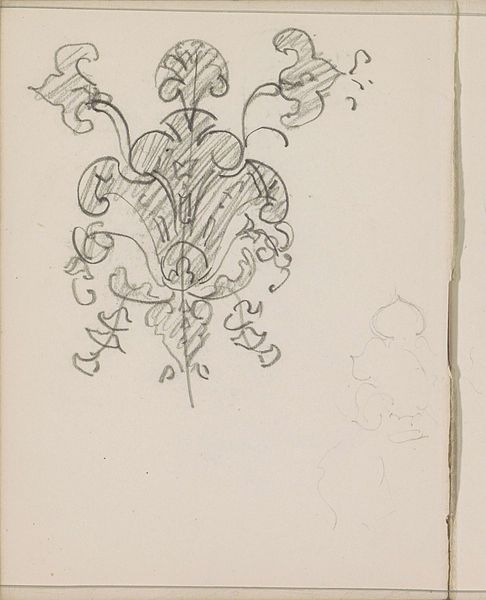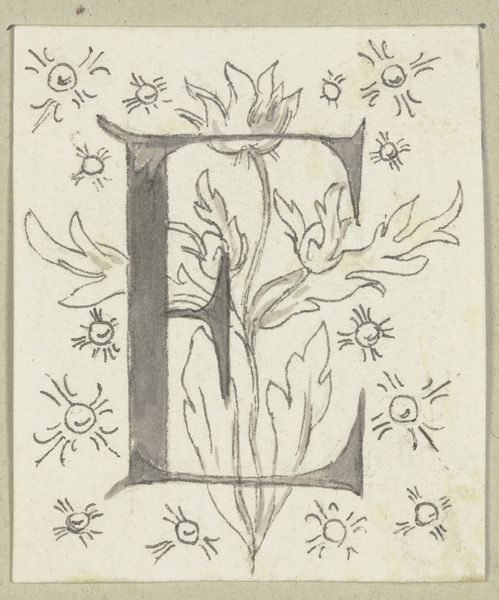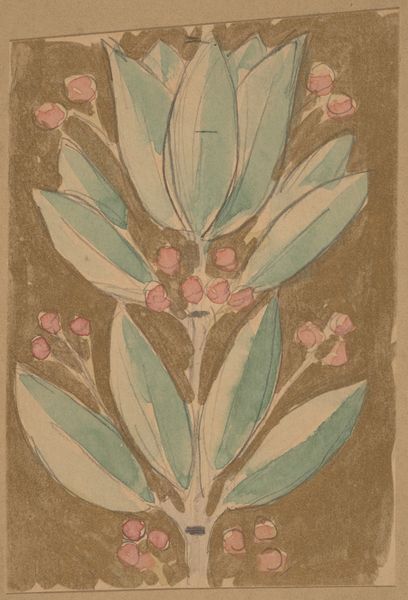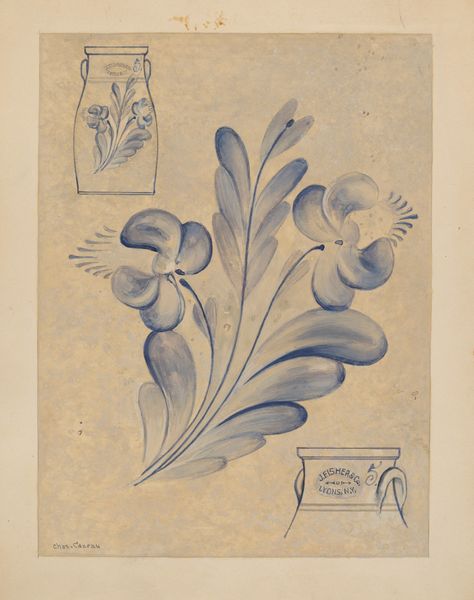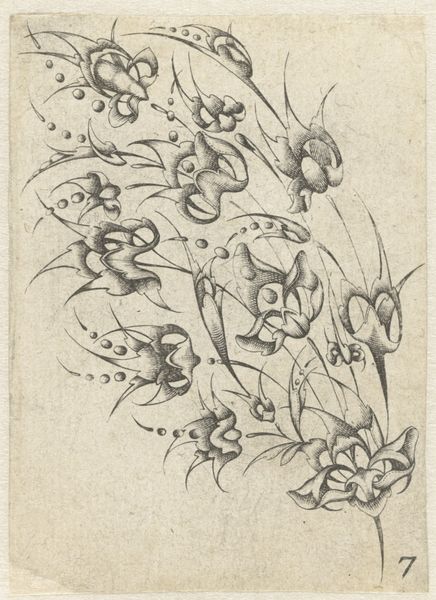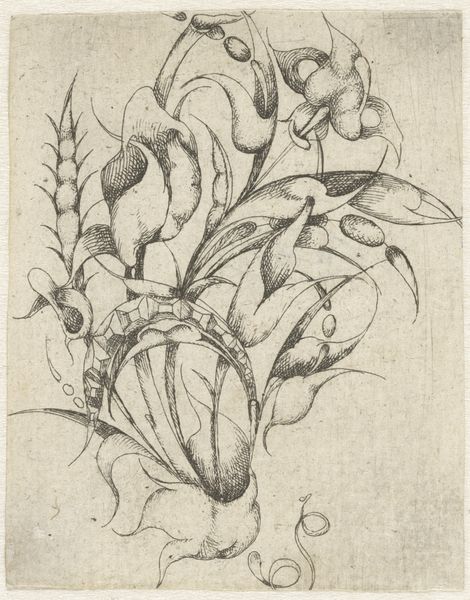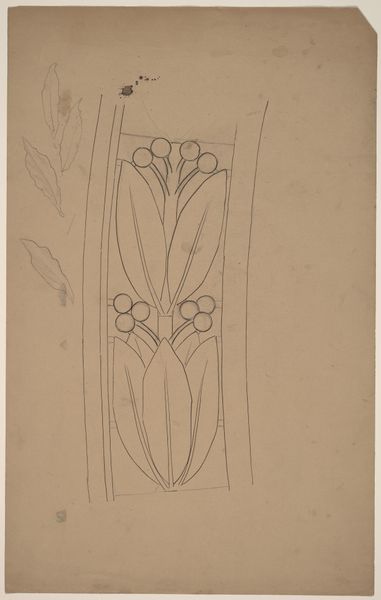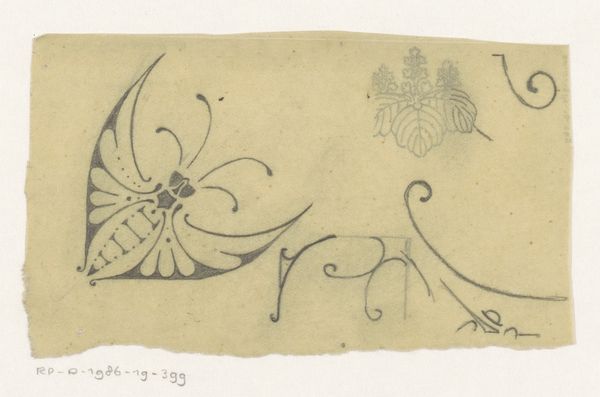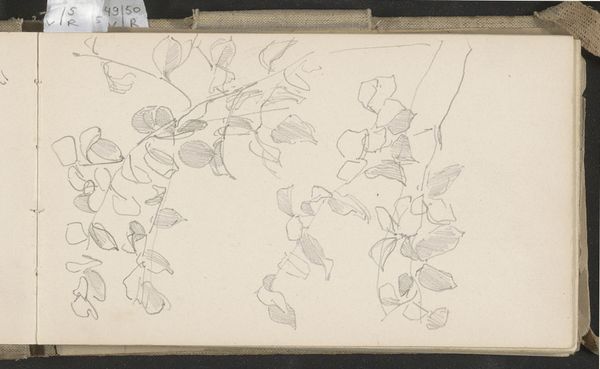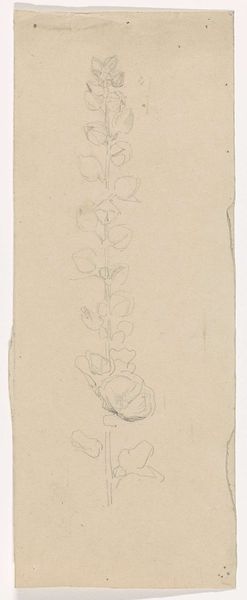
drawing, paper, ink
#
drawing
#
organic
#
art-nouveau
#
paper
#
ink
#
geometric
#
decorative-art
Dimensions: sheet (irregular): 36.5 x 13.2 cm (14 3/8 x 5 3/16 in.) mount: 46 x 30.3 cm (18 1/8 x 11 15/16 in.)
Copyright: National Gallery of Art: CC0 1.0
Curator: Charles Sprague Pearce created this "Study for a Border Design" between 1890 and 1897, using ink on paper. Editor: Immediately, I notice this repeating pattern of leaves, berries, and those stylized waves. It's very calming. The muted tones give it an understated elegance. I wonder if the overall decorative schema sought to project this placidity in an interior space? Curator: Given its decorative nature, let's consider its intended context. As a border design in the Art Nouveau style, this drawing exemplifies the shift towards integrating art with everyday objects and spaces. Pearce's use of ink suggests a relatively efficient and repeatable process. One can imagine that the lines would have served as templates for craftsmen creating architectural features such as murals or textiles, therefore, understanding it from this context reveals the labor process itself. Editor: Absolutely. And within that framework, it presents organic motifs rendered in a geometric fashion. Note how the berry clusters are so perfectly spherical, repeated with slight variations that give it life, and it stands with its bilateral symmetry, making it very predictable for an Art Nouveau style work. Those kinds of decisions make me ask myself how symbols and themes associated with nature have shifted over time, particularly considering turn of the century concerns over industrialization. Curator: It makes one think about accessibility as well. If it was scaled and used in mass production as part of an architectural feature it may well have represented part of an early intention to improve working and domestic class interior design by injecting an aura of refined nature through cheaper production processes. The use of paper as the underlay is therefore indicative of that goal, perhaps, representing, as it were, the artist's design intention. Editor: Interesting point. One could easily perceive the symbol as signaling "nature" while serving decorative purposes. The undulating wave pattern, a near-ubiquitous element across cultures, often implies serenity and a kind of ebb and flow, that is, a natural continuity between this image and how it operates and interacts with different levels of conscious understanding within human societies, especially for the decorative intention you refer to. Curator: And examining this continuity and design process informs how aesthetics are produced and consumed even to this day, providing tangible links between art, labor and its influence on modern day tastes and habits. Editor: Exactly. A quick sketch can open pathways to rich, ongoing, symbolic and social dialogues across centuries.
Comments
No comments
Be the first to comment and join the conversation on the ultimate creative platform.
